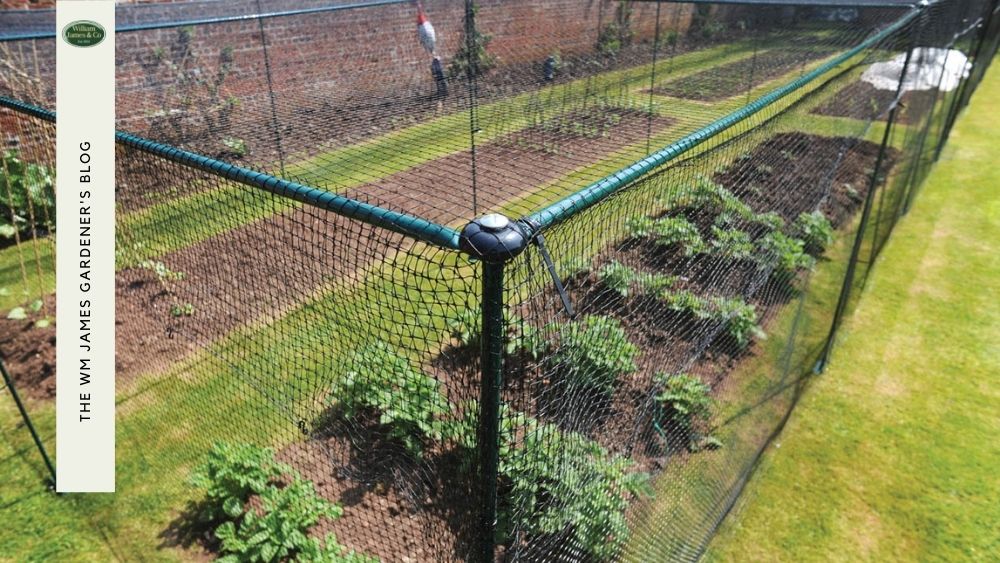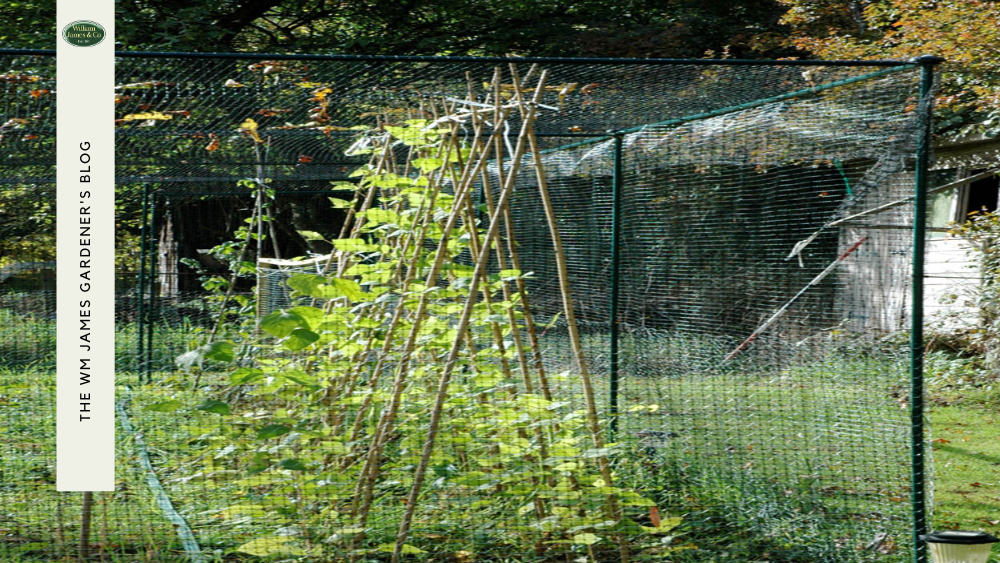We use cookies to make your experience better. To comply with the new e-Privacy directive, we need to ask for your consent to set the cookies. Learn more.
5 Benefits of Using Brassica Cages For Your Garden
- Admin
- WM James Gardening Blog
- 17 Aug 2022
-
19views

As the world moves towards a sustainability-focused agriculture, it is important to discuss the many different types of growing systems that are available. One such system is the brassica cages system, which is a versatile and efficient way to grow crops.
In this blog, we will discuss the benefits of using brassica cages, as well as give tips on how to choose the best type for your needs.
Brassica cages, also known as fruit cages, are a type of growing system made up of vertical rows of wire mesh fencing. The spaces between the wires are large enough to allow plants to grow, but small enough so that they do not touch each other.
This allows for a high degree of airflow and good light penetration, which are both essential for healthy growth.
Benefits Of Using A Brassica Cage
There are many benefits to using brassica cages over traditional raised bed systems, such as:
Flexibility
Brassica cages are flexible, which makes them perfect for small-scale farming or gardeners who want to experiment with different crops. You can grow a variety of plants too, from leafy greens to root vegetables.
Efficiency
A caged system is very efficient at turning nutrients into plant growth and produce. The wide spacing between the plants means that there is little competition for nutrients, and the high airflow allows for quick growth.
Variety
With brassica cages, you can grow a variety of vegetables in one space, allowing you to try different varieties without having to make any changes to your garden layout. This is great if you want to experiment with new vegetables or fruits but don’t have space for a traditional garden.
Easy Maintenance
Brassica cages are easy to care for, as they are free of weeds and require little in the way of fertilization or watering. All you need is sunlight and water to maintain them, making them ideal for small gardens or farmers who want to spend less time tending their crops.

How To Protect Brassicas
One of the biggest challenges with brassica crops is that they are susceptible to common pests and diseases. To protect your plants, you'll want to follow a few basic tips:
Fertilise regularly
Brassicas need plenty of fertilization in order to thrive. Use balanced compost or plant-based fertilizer when fertilising your brassicas, as this will provide nutrients needed for healthy growth.
Use a resistant variety
If you want to protect your brassicas from specific pests or diseases, then switch to varieties that are particularly resistant. This can be difficult, as many Brassica varieties are very versatile and can grow in a range of conditions. However, by choosing resistant types you will increase your chance of success in safeguarding your plants against infestations.
Keep weeds at bay
Weeds - especially in the UK - can take over your brassica crops quickly, and will compete with them for sunlight, water and nutrients. To prevent this from happening, keep weeds away from your plants by regularly weeding. If you are struggling to get rid of unwanted vegetation yourself, then consider hiring a professional gardener to help out.
If you are looking for an easy way to add some greens to your diet, then brassica cages might be the perfect choice. With little maintenance needed, these plants can grow in a variety of climates and make a great addition to small spaces.
Brassica Vegetable Cages
Brassicas are a type of vegetable that is widely grown in many parts of the world. These vegetables are considered a "power house" food because they contain high levels of antioxidants, minerals, vitamins and other nutrients.
Brassicas - such as cabbage, cauliflower and broccoli - can be eaten fresh or cooked into dishes such as stir fries, soups, stews and pasta sauces. Some Brassica varieties are also used for greenhouses to produce leaf vegetables for the table.
Brassica plants are easy to grow, but require a good level of fertilisation if you want them to produce healthy crops. Fertilizer should be applied at the beginning of each growing season, and a resistant variety is recommended if you want to protect your plants against specific pests or diseases.
Vegetable, or fruit cages, are typically made from aluminium or wood and are available in different sizes for growing a wide variety of fruits and vegetables.
They offer great protection all year round from the elements and can be used for a wide variety of crops, including apple trees, grapevines, cucumbers, peas and beans.

Installing A Brassica Cage
To get started, you'll need to gather the necessary supplies. These include:
- A vegetable cage (either wooden or aluminium)
- Fertiliser (optional but recommended)
- Pests and diseases resistant varieties of plants
- Water containers and hose connectors for watering the plants
Location
Locate a safe, sheltered area in your yard to install your brassica cage. The location should be sunny with good drainage, and free from wind and heavy rains.
Size
Choose the size of your vegetable cage that will accommodate the number of plants you plan to grow. Larger cages can support more fruit or vegetables, while smaller cages are better for tender crops such as lettuce or tomatoes. Keep in mind that larger cages take up more space, so factor that into your planning.
Assembly
The assembly of your cage is relatively simple and can be done by one person with some basic hand tools. Follow these steps:
1) Find the centre of the vegetable cage and drill a 1-inch hole near the top using a hammer and screwdriver.
2) Place an appropriately-sized water container
3) Attach the watering hose connector to one of the water containers
4) Extend the other end of the watering hose connector to a suitable place close by.
5) Fill up the water container with fresh, cold water and attach it to hole in the cage. Turn on the hosing outlet until there is a gentle flow of water from both hoses.
6) Adjust the watering schedule to match the needs of your plants.
7) Once your brassica cage is fully assembled, you're ready to start planting!
Maintenance
Regular spring and summer cleaning will help to keep your brassica cage in great condition. Remove any dead or damaged plants, debris, orlammings from the cages.
Take note of the watering schedule mentioned earlier so that you can adjust it as needed. And lastly, always make sure to have a spare water container on hand just in case there is an emergency situation where access to a water source is temporarily blocked.
Final Thoughts
This is why we highly recommend investing in a brassica cage for your garden or allotment. Not only does it protect your crops from pests, but also ensures that they don’t suffer from harsh weather conditions and diseases.
Nowadays, there are many options to choose from, ranging from simple wooden ones to innovative metal cages.
At William James, we stock a range or vegetable cages for your requirements, but if you're not sure - you can contact our friendly team who will be happy to advise you.
FAQs
What size netting do I need for brassicas?
The size of the netting will depend on the size and number of your brassicas. Generally, you’ll want to use garden netting that is at least twice as long as the height of your cages will be sufficient.
How tall does a Brassica cage need to be?
The height of the cage will depend on the size and type of brassica you are growing. Generally, a Brassica cage needs to be at least 50cm high for lettuces and 70-80cm high for cabbage, Brussels sprouts or cauliflowers.
Can I put more than one crop in a single cage?
Yes, you can put more than one crop in a single cage. However, make sure that the netting of the cages is large enough to allow for adequate ventilation and sunlight exposure for each plant.
Do I need to clean my brassica cages every season?
Yes, you should clean your brassica cages every spring and summer. This will help to keep them in great condition and free from pests and diseases.













